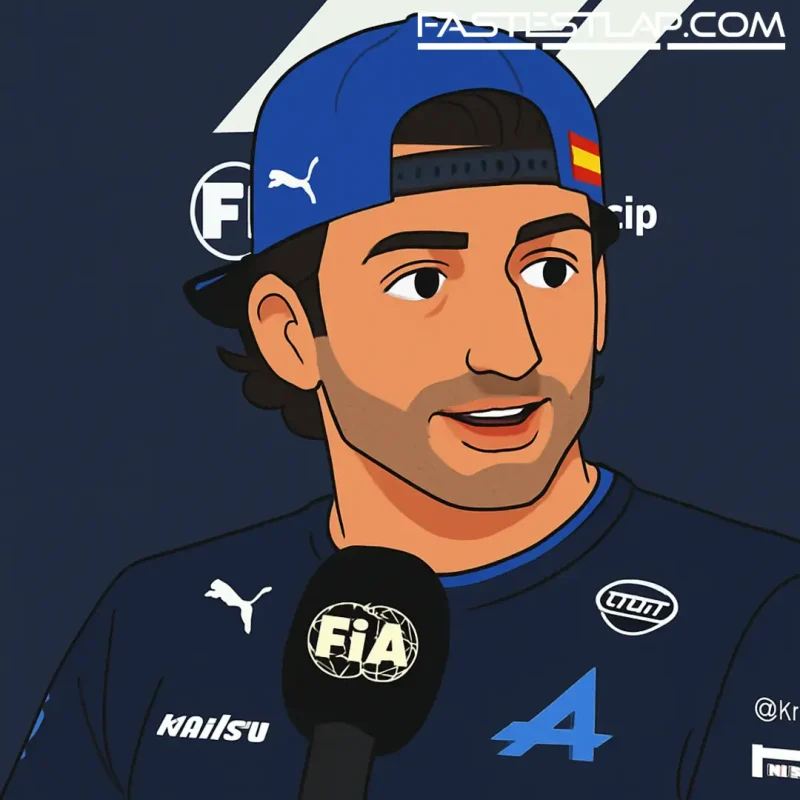Carlos Sainz rolled into Monza with unfinished business from Zandvoort and a point to prove — not just on track, but in the stewarding room too.
A week on from that lap-one tangle with Liam Lawson at Turn 1, the Williams driver still insists the 10-second time penalty and two penalty points dumped on his Super Licence were the wrong call. Both he and Lawson limped away with punctures after the squeeze into Tarzan, and the paddock promptly split on blame. The stewards didn’t: they pinned it on Sainz.
He’s not letting it rest there. Sainz revealed at Monza that he sat down with the stewards after the race to comb through the footage and data — and he came away convinced a more patient read would have landed differently.
“I went in, we went through it properly,” he said, still clearly irked but measured. “Once all the angles and evidence are looked at, it’s pretty obvious to me the decision wasn’t the right one.” Williams, he added, is assessing whether there’s enough new material to re-open the case and “change the outcome.”
That’s a big ask. F1’s review process is famously tight and rarely turns around a penalty once the flag has fallen. But Sainz’s broader gripe was as much about process as it was about Zandvoort itself. He reckons the decision came too fast on a chaotic Sunday and believes that haste cost him.
“I get it — they had a very busy afternoon,” he said. “But rushing a call without digging deep enough into the analysis… you end up with a judgment that just doesn’t stack up when you study the onboard.”
For Sainz, there’s a longer-term fix: consistency from the people making the calls. He’s long been in the camp that wants a fixed panel of F1 stewards, rather than the rotating system that has different combinations in place each weekend. “The regs are complex. Having the same people judging them would help everyone know where the lines are,” he said. “That’s my view — not the GPDA’s — but I think it’s the way forward.”
On the incident itself, the Spaniard hasn’t budged. He felt he’d left racing room on the outside as they arrived at Turn 1 and that the contact didn’t merit a sanction once you study the nuances of positioning and speed. Lawson, driving for Racing Bulls, saw it the other way around. The stewards sided with the New Zealander’s interpretation. Sainz is betting a closer look might shift it back.
It’s the kind of flashpoint that tends to follow Sainz — detail-oriented, he’s relentless when he believes a call’s gone against him. And Monza is fertile ground for a response, even if the scars are administrative rather than physical. The car’s quick on the straights, the margins are tiny, and the penalties sting harder when every tenth matters. Williams can’t afford to throw any away.
Whether the FIA entertains a review is another matter. There’s no appetite in race control to set precedents that invite a queue of post-race appeals every time two cars rub wheels at Turn 1. But Sainz isn’t asking for a new rulebook — just, in his words, another look now that cooler heads can prevail.
“I’m calm now, and I still feel the same as I did on Sunday — that it wasn’t acceptable,” he said. “If there’s been a misunderstanding, or something wasn’t considered, then let’s re-analyse it.”
Even if the penalty stands, the message is clear: Sainz wants sharper consistency and more time taken on the calls that decide afternoons and, sometimes, championships. Monza may not deliver the verdict he wants, but it’ll show us something else — how a driver channels frustration into lap time. And in a Williams that’s been punchy on low-drag setups, that might be the most persuasive argument he can make.




